In recent years, more financial firms have begun to open up offices in Miami, in particular a number of prominent hedge funds. It has also been the home of TradeTech FX USA for a number of years, where participants from the sell side, buy side and vendors converge every February. This year, I made my way back to Miami to scope out the current developments in the FX market. These days, I am focused heavily on inflation at Turnleaf Analytics, these days, as opposed to FX, where I spent most of my career. However, that being said inflation is a key indicator for FX investors, and hence, it’s always good to hear macro views at events like this, and to see how to they chime with our inflation models.
I also had the opportunity to represent Turnleaf Analytics in the “Shark Tech” startup session, which was great fun, where I talked about all the interesting work we’ve been doing forecasting inflation using machine learning and alternative data. I also participated in a panel on AI alongside Lee Ferridge (State Street), Vinay Trivedi (MaxxTrader Systems) and Revant Nayar (FMI Technologies LLC).
In this article, I’ll try to cover some of the discussions at TradeTech FX covering a multitude of different topics, including macro, trade automation, regulation and so on. Some sessions took place under Chatham House rules, so I’ll often try to give a flavour of discussions, rather than direct quotations each time.
On the macro front
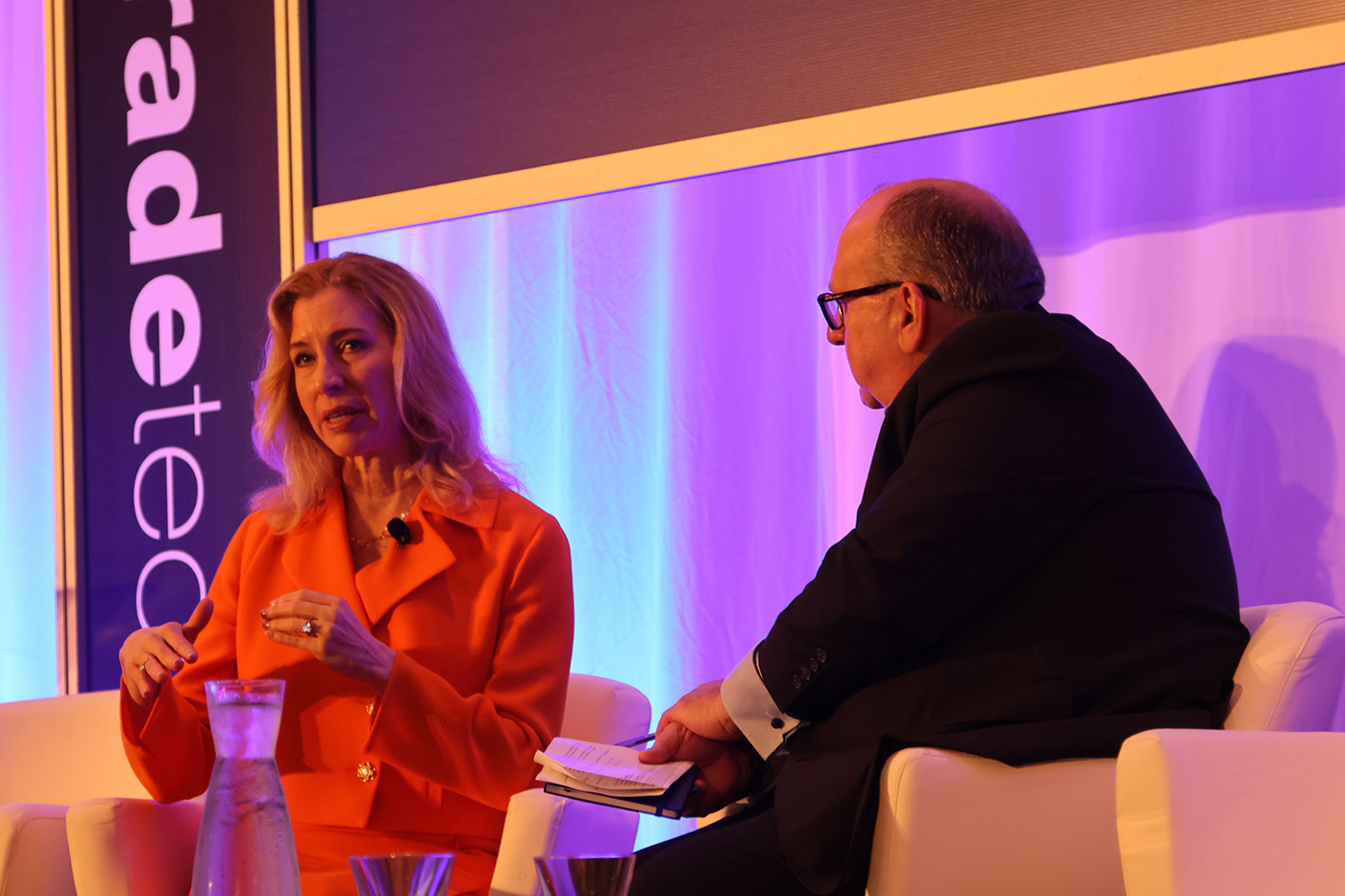
Rebecca Patterson (formerly Bridgewater) and Lee Ferridge (State Street)
There were many discussions on the macro front, which covered a spectrum of different topics ranging from the likely next move from the Fed to geopolitics. The main conference day started with presentation by Rebecca Patterson (formally Bridgewater). Patterson began her discussion by noting how FX implicitly requires a broad macro knowledge, and an understanding of trade flows and capital flows. On the question of a soft landing, she attributed slightly more possibility to that, compared to a hard landing. In particular, she wasn’t emphatic about the idea of a soft landing, because ultimately, it needed several factors to occur. First consumers need to keep spending, but at present, confidence is skewed more heavily towards high end consumers, as opposed to across a full spectrum, and any pullback could result in a negative feedback loop. On the inflation front she was worried there are a myriad of factors helping keep inflation higher, which could make the Fed go slow in terms of cutting. Indeed, the market has already begun to reduce the number of Fed cuts this year. Indeed, looking at our own Turnleaf Analytics inflation forecasting model for the US, across the curve they have been on the higher side compared to the market, even before the latest upward surprise in US CPI. Whilst the focus is unsurprisingly on the presidential election, Patterson noted that who wins Congress is crucial. The deficit has ratcheted higher with a combination of fiscal policy and tax cuts from Trump.
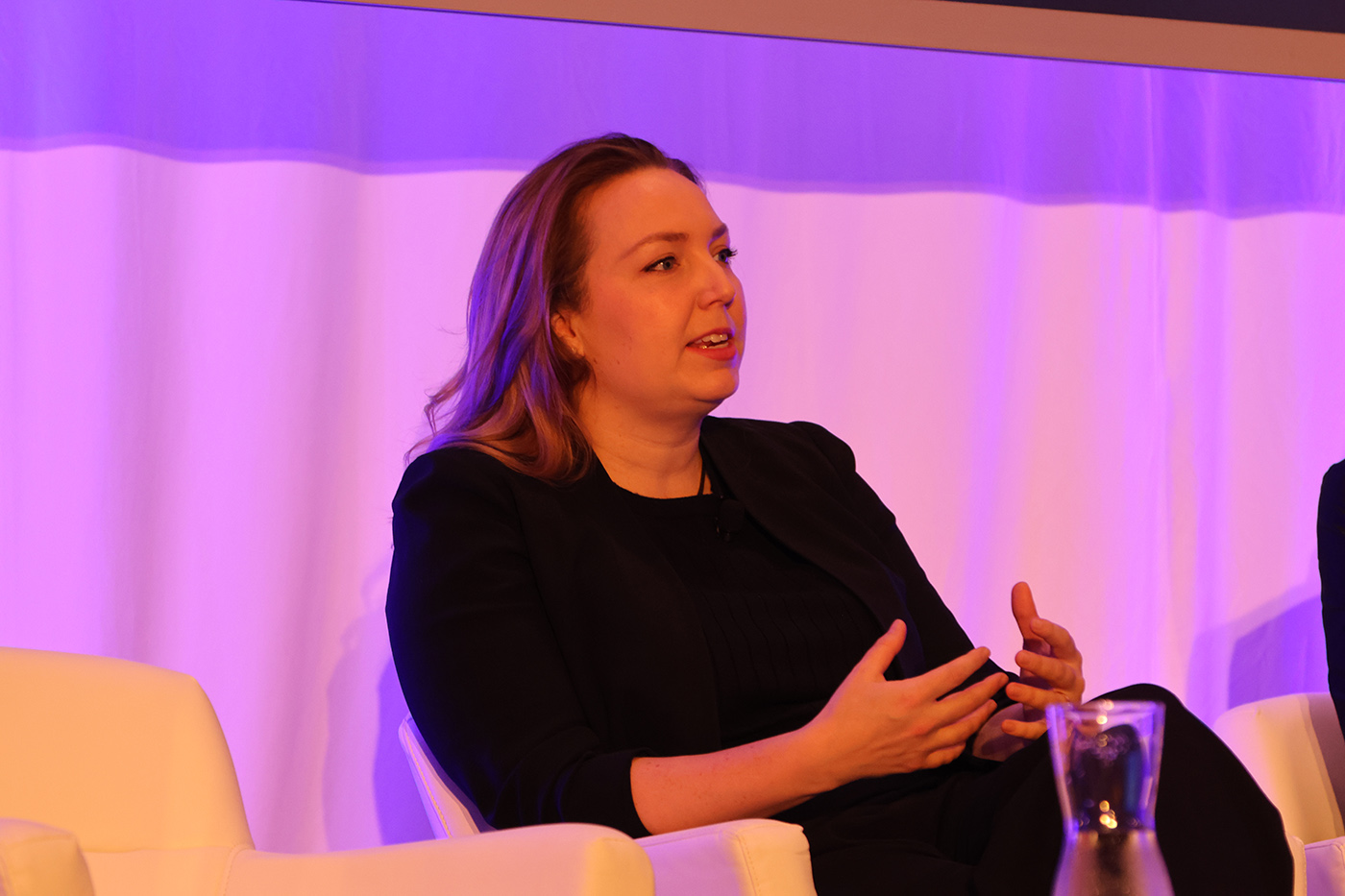
Frances Donald (Manulife Investment Management)
Also on the macro front, Candice Bangsand (Fiera Capital) interviewed Frances Donald (Manulife) about her outlook for the coming year. Donald’s view was more to the downside compared to Patterson. Donald noted that she was still in the recession camp. Indeed looking globally, whilst the US was indeed growing, this was not true everything. She noted that the UK and Japan for example were in recession, and we were already in a global easing cycle. It looked as though the Fed would be the last to cut, likely in June. Central banks had a difficult task, whilst they could ease because of growth concerns, there was also the question of inflation, and she didn’t want to dismiss the recent upside in US CPI, even if she took the view that a lot of inflation was transitory. It was also the case that drivers of inflation have been changing, whereas before it might have been because of spending (ie. demand), this is not necessarily the case now. Take food for example, Donald suggested. It is high because of other factors, such as geopolitics, insects, weather etc. It is more difficult for central banks to respond in a more supply driven world.
One interesting point which Donald made, was the disconnect between manufacturing and services. Last year everyone had been calling for a recession, because leading indicators were pointing to this. Whilst global manufacturing had entered a recession, services have not. Manufacturing based economics fell into recession, whilst service led economies (like the US) have done well. On the FX side, she felt it was difficult to be bearish USD given macro conditions
Focus on politics
With wars in Ukraine and Gaza, geopolitics has been in the spotlight recently. The geopolitics panel was moderated by Jillien Flores (MFA), and had panellists Andy Blocker (Invesco), James Fishback (Azoria), Steven Geovanis (Wilshire) and Michael Allen (Beacon). On the Middle East, it was felt that we wouldn’t see a further escalation. The prospect of a second Trump presidency was also debated, and how it would likely result in tariff on China, and it was unlikely that China tensions would dissipate under Trump.
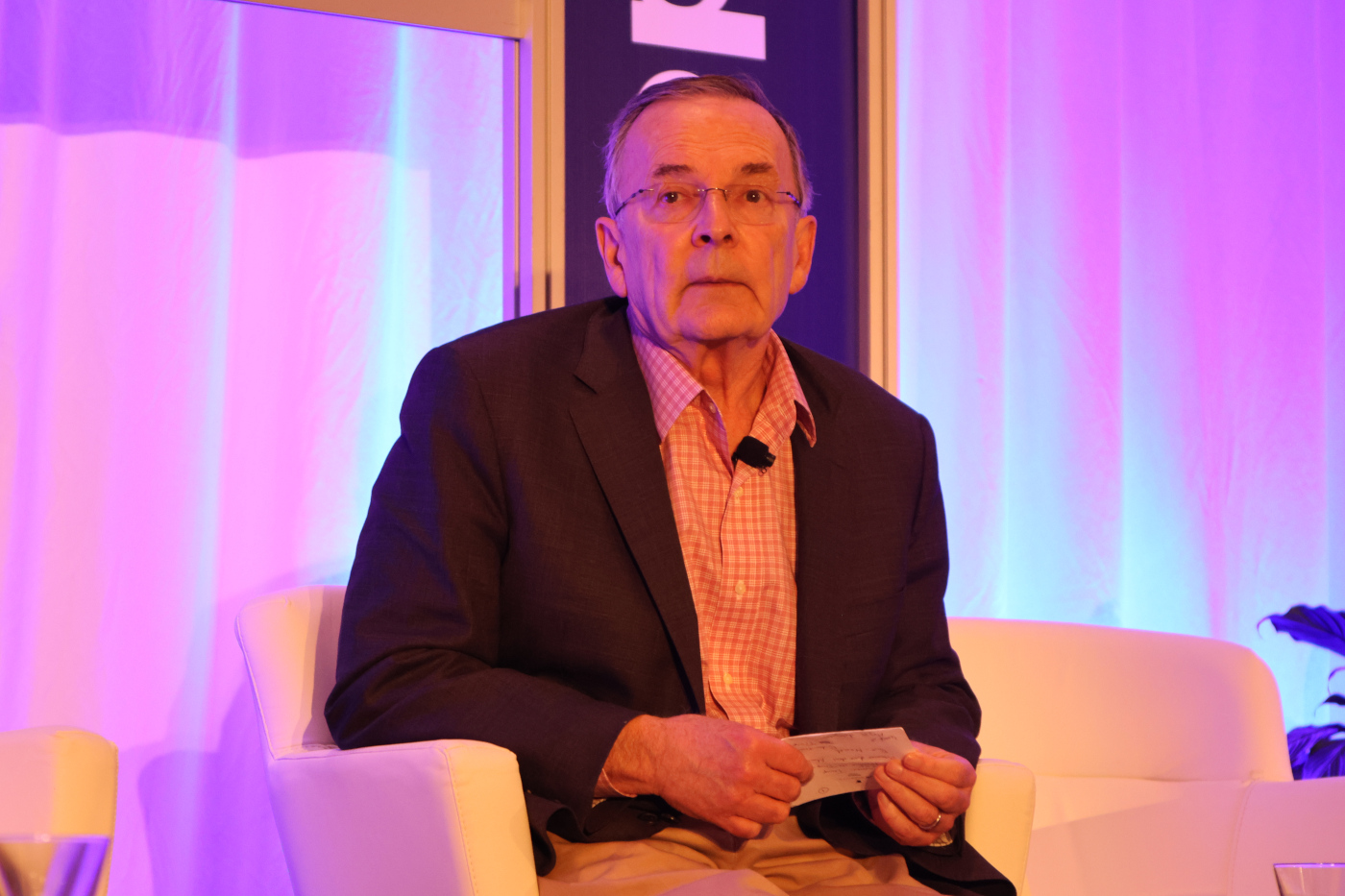
Greg Valliere (AGF Investments)
Greg Valliere (AGF Investments) had a session dedicated largely to the US presidential election. He noted that if the election were held now, Trump would likely win, but of course, the election itself is not being held now. Biden has also been slipping with his core groups such as young people. On the question of the candidates, polls suggested voters felt Biden was too old. Whilst slightly younger than Biden, there was also the question of Trump’s health. Valliere couldn’t really see any other candidates contesting the election, barring some sort of health issue. He also downplayed rumours that Biden would stand aside for Michelle Obama, noting that she is not interested in running. Furthermore, it has been very rare for presidents to stand aside, with one of the few exceptions being LBJ who declined to stand for a second term. He added though that it was not out of the question, that Nikki Haley could run as an independent. Whilst there was a path to victory for a third party candidate it was unlikely.
De-dollarisation debate
If there is a topic that seems to always get interest on Finance Twitter, it is the talk of de-dollarisation. The premise is that the USD’s place as the world’s reserve currency is threatened, engulfed by changing geopolitics. Tomo Tokuyama moderated a discussion with panellists Lee Ferridge (State Street) and Tom Nakamura (AGE). Nakamura suggested that de-dollarisation is a reality, following the weaponisation of the dollar, and it was becoming a slow war of attrition. Ferridge partially agreed, noting that yes the dollar’s usage might be reduced, but it won’t get replaced. Sterling had indeed lost its reserve currency in the past, but at that time, there was an obvious alternative, the dollar. Today, it is less clear, because there is no viable alternative. The Euro was not an option given the lack of the fiscal union, and CNY given geopolitics. It was also unlikely to be crypto.
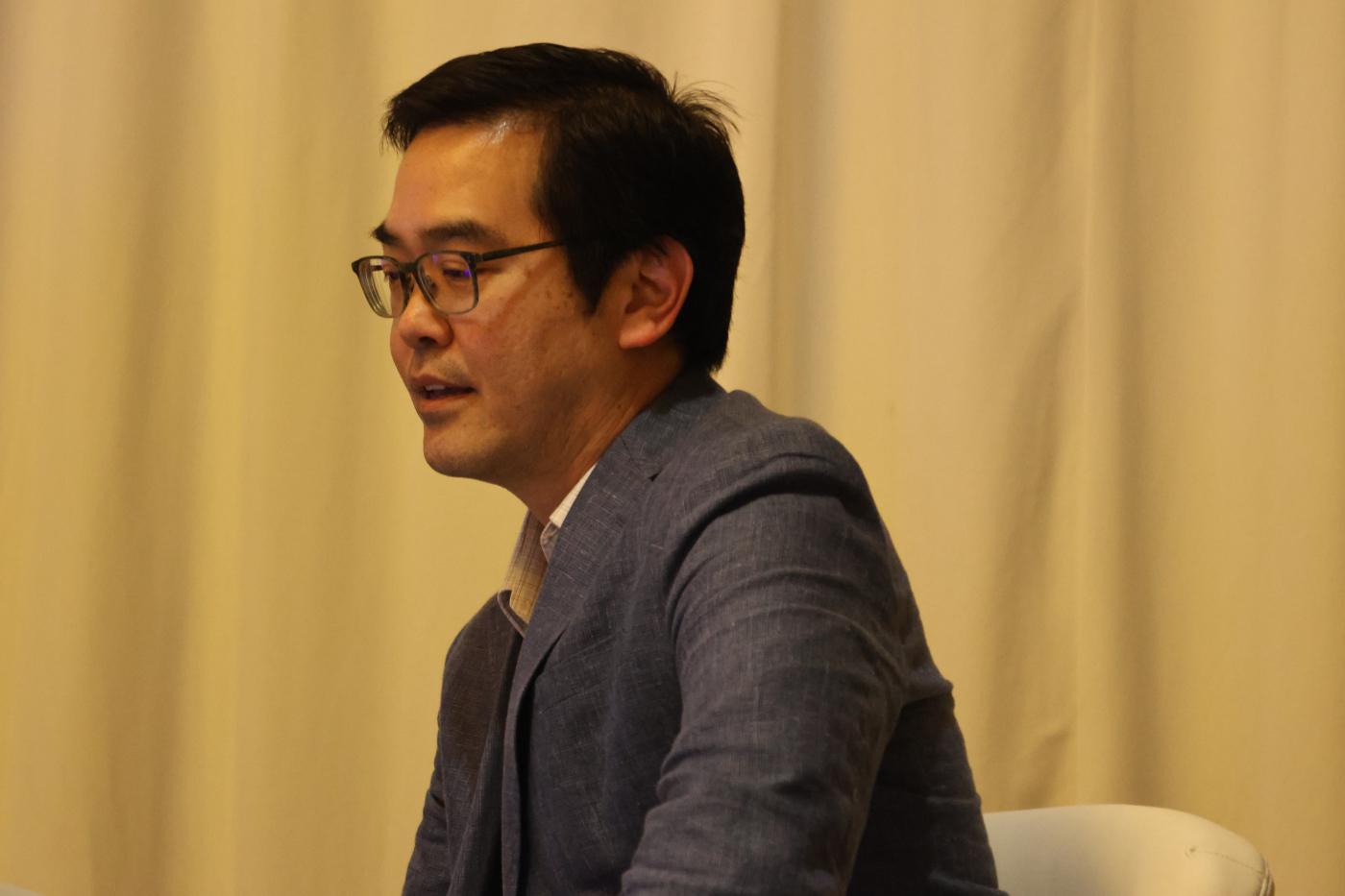
Tom Nakamura (AGE)
Optimising liquidity and trade automation
An important part of the investing process is trying to figure out how to source liquidity. There were a number of discussions on this topic, including a panel moderated by Tom Gentile (Crabel Capital), with panellists Mike Babic (BoA), Chris Connelly (Cubist), Srichakri Adhikarapatti (UBS), Eugene Markman (ION FX) and Phil Weisberg (oneZero). The topic of the optimal number of counterparties came up. The point that Connelly made was that there it was important to have a conversation with counterparties about what you were doing. Once you begin trading you needed to collect data and engage with LPs. Babic chimed in on the point of the need for a two way conversation, and it was not a set it and forget it process. Relationships were important, particularly at those times when liquidity went to zero. Adhikarapatti noted that whilst spreads may not be dissimilar, the skew could be different and other important points such as market impact and information leakage could differ between counterparties.
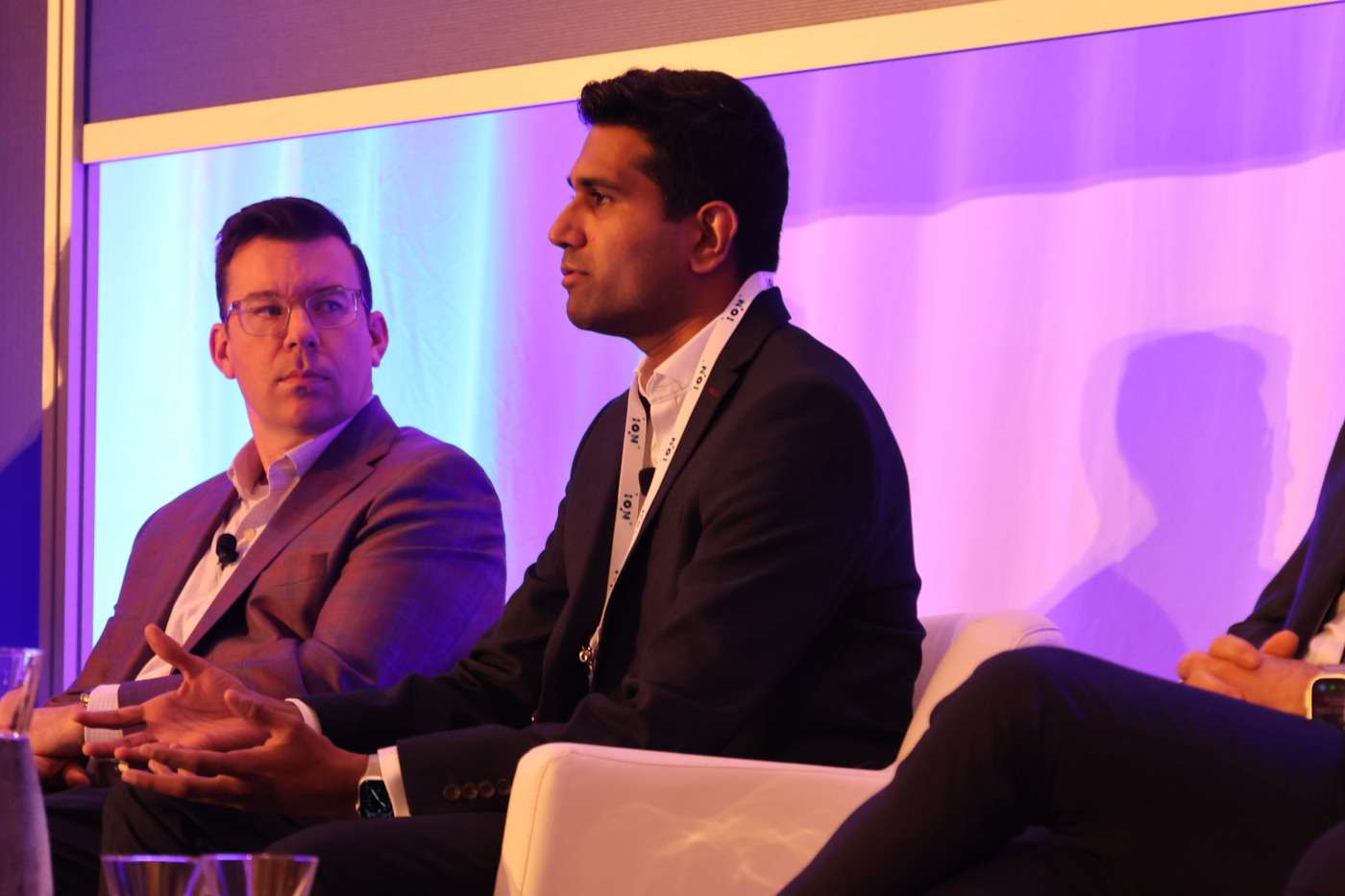
Chris Connelly (Cubist) and Srichakri Adhikarapatti (UBS)
Allan Guild (Hilltop) also interviewed Kaustuv Dasgupta (Two Sigma) about executing EMFX, which also had a focus on liquidity. Dasgupta made the point that simply having more liquidity providers on your panel is not always the answer. Having too many LPs in your panel could result is market information leakage. They used a quantitative approach to dealer selection using a proprietary approach. Simply looking at simple metrics like spreads in isolation may not be sufficient to understand the quality of flow. Ultimately, it was a matter of communicating openly with the counterparty and there was a need to listen to the data, Dasgupta added.
The Global Code for FX
There was a panel about the Global Code for FX which had got introduced a few years, moderated by Janet Dawson (GEMA), with panellists Geraldo Garcia (Banxico), Daniel Mitchell (RBC Asset Management), Harri Vikstedt (Bank of Canada) and Anna Nordstrom (NY Fed). It was noted that how before the code, the markets had very granular and disparate rules, and there had been market abuse. The idea of the code was to have one global code, and to make it principal based. Not only was it meant to cover the sell side, but other participants, including the buy side, infrastructure providers and central banks. The code has had a meaningful impact on trade practices, it was noted. Indeed, there has been reduction in last look times by providers, for example. Furthermore, the code is being reviewed, every few years, adapting to changes.
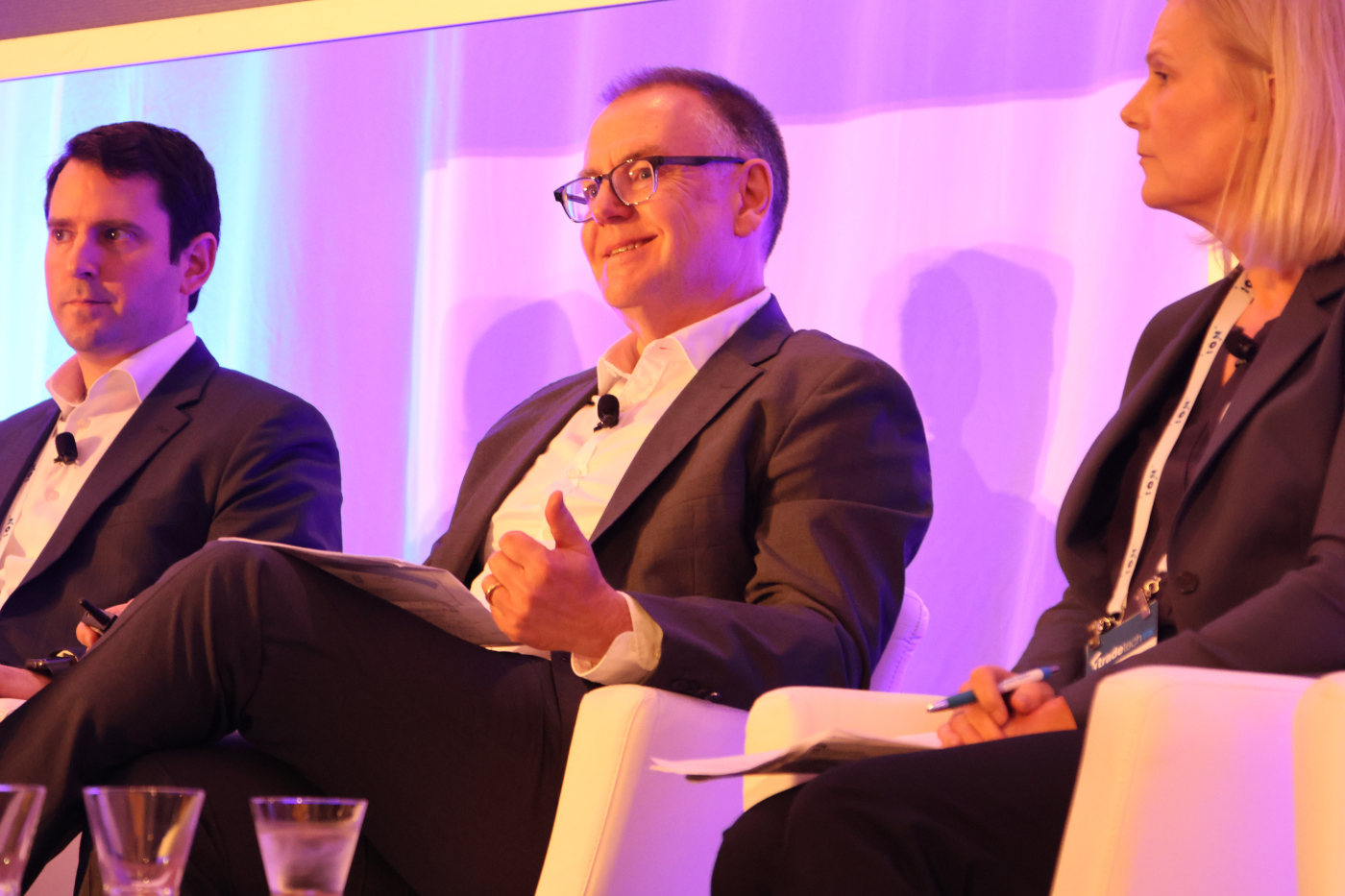
Daniel Mitchell (RBC Asset Management), Harri Vikstedt (Bank of Canada) and Anna Nordstrom (NY Fed)
TCA and pretrade analytics
One subject which has gained prominence in recent years has been TCA in FX. There are indeed many vendors in this space including TradeFeedr, who have managed to bring together a massive amount of trade data on their platform for number crunching, combined with tick data, to make doing TCA relatively straightforward. One of the biggest challenges in data science, is the data pipeline for storage.
Michael Melvin (Rady School) interviewed Brendan McMurtray (T Rowe Price) about the subject of pre-trade TCA. McMurtray had taken the route of building their own framework for TCA. Obviously, he noted that if you don’t have the resources, another option would be a vendor. Of course doing your own TCA framework makes it more customisable. The flipside, which I’d add, is that you most likely need a vendor such as TradeFeedr, when it comes to peer group analysis, given that trade data can only be aggregated by a third party (and can’t be shared directly). McMurtray detailed how the project took 5 years. The goal had been to optimise the workflow around execution, to understand when best to execute, the size, the counterparty etc. They had a machine learning model to predict which counterparty would likely win a particular trade, and are working on a module for recommending which algo strategy is most appropriate. One important point is that given traders are very busy, the system had to distil down the recommendations easily. To aid them in their task they had many thousands of data points of historical trade data, to help train the various models. The underlying system was written in R.
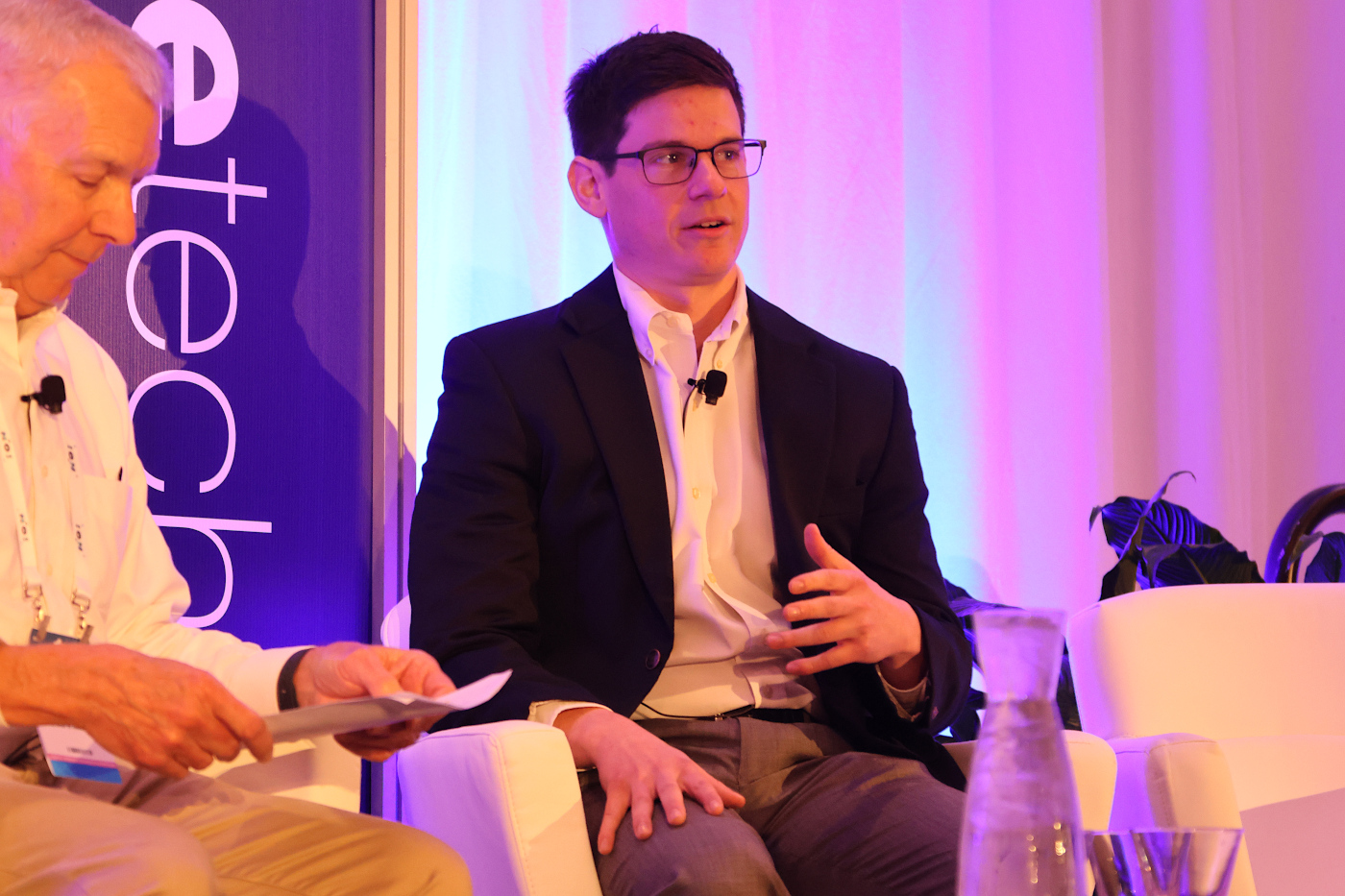
Michael Melvin (Rady School of Management) and Brendan McMurtray (T Rowe Price)
Diversity, equity, and inclusion
A subject which has become more prominent in recent years has been that of DE&I. Allan Guild (Hilltop) moderated the discussion on the topic with Inderjit Takk (Mackenzie Investments), Sabin Chowdhury (PIMCO) and Telmo Simoes (ATFX). It proved to be a very honest discussion about the topic. It was noted that having a diverse desk was important, and key to that was for people not self select themselves out of the recruitment process. Business might be king, but ultimately, there was some behaviour which has not always been called out, and a specific example of this was given. Ultimately, it was suggested that HR needed to promote inclusion, and to get people to feel a sense of belonging. Senior managers needed to drive that message. Surveys weren’t necessarily always the answer as well.
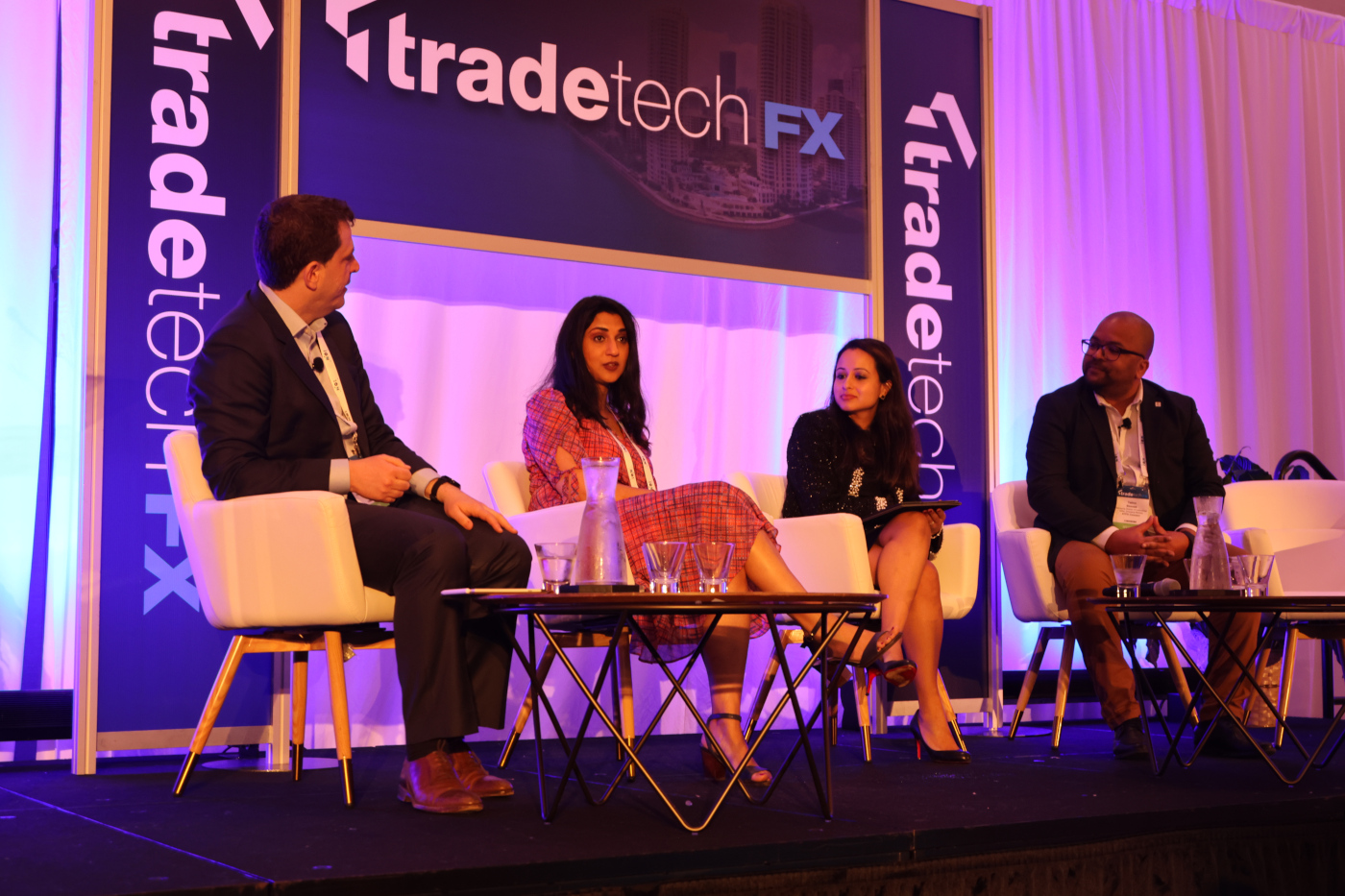
Allan Guild (Hilltop), Inderjit Takk (Mackenzie Investments), Sabin Chowdhury (PIMCO) and Telmo Simoes (ATFX)
Conclusion
I’ve tried to give a summary of the discussions at TradeTech FX USA, which brought together talk on macro and also the whole business around trade execution. I’m looking forward to the next instalment of TradeTech FX, which will be held in Europe in the Autumn.